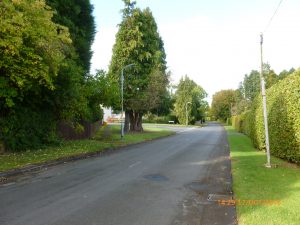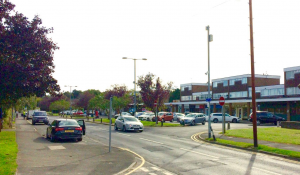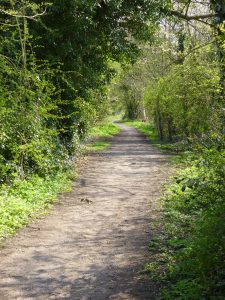 Around the time of the arrival of the railway in 1905, approximately 410 hectares of farmland south of Ponteland was bought and the whole area divided into small plots, enabling plans for a ‘Garden City’ at Darras Hall to be realised. With roads marked and services supplied, plots were auctioned off in 1911 for buyers to build their own homes and grow their own flowers and vegetables to supply markets in Newcastle. Careful planning went into the infrastructure of the Darras Hall Estate and the Trust Deed laid down standards which still maintain today.
Around the time of the arrival of the railway in 1905, approximately 410 hectares of farmland south of Ponteland was bought and the whole area divided into small plots, enabling plans for a ‘Garden City’ at Darras Hall to be realised. With roads marked and services supplied, plots were auctioned off in 1911 for buyers to build their own homes and grow their own flowers and vegetables to supply markets in Newcastle. Careful planning went into the infrastructure of the Darras Hall Estate and the Trust Deed laid down standards which still maintain today.
Darras Hall and the arrival of the railway in 1905 and its subsequent extension to Darras Hall in 1913 did little to increase the overall resident population, which stood at around 1,000 in the 1940s. The railway line was closed in the late 1960’s
 The Darras Hall Estate covers an area of approximately 410 hectares; it was founded in 1910 by a group of individuals who became the ‘Trustees of the Estate’. Joseph W Wakinshaw, one of the founders of the Trust Deed, had a vision for the potential development of the ‘railway’ and introduction of the ‘motor vehicle’ to allow families to reside away from the city boundaries into greener locations. Today, the management of the Estate is controlled by ‘The Trust Deed’ and bye-laws implemented by the Estate’s Committee. The Estate was originally divided into plots of approximately 2 hectares (5 acres) in size. Over time it has been subdivided into various plot sizes; the minimum allowed in most cases by the Trust Deed is 0.10 hectare (1/4 acres)
The Darras Hall Estate covers an area of approximately 410 hectares; it was founded in 1910 by a group of individuals who became the ‘Trustees of the Estate’. Joseph W Wakinshaw, one of the founders of the Trust Deed, had a vision for the potential development of the ‘railway’ and introduction of the ‘motor vehicle’ to allow families to reside away from the city boundaries into greener locations. Today, the management of the Estate is controlled by ‘The Trust Deed’ and bye-laws implemented by the Estate’s Committee. The Estate was originally divided into plots of approximately 2 hectares (5 acres) in size. Over time it has been subdivided into various plot sizes; the minimum allowed in most cases by the Trust Deed is 0.10 hectare (1/4 acres)
The Estate is by far the largest built development in the Civil Parish and it dominates the settlement of Ponteland. It has a Garden City character with mature trees present within curtilages and maintains relatively strong green links to the surrounding countryside.
 ‘Among the characteristics which make the Darras Hall Estate unique are the low level density of dwellings, the large plot sizes and open spaces, together with a high percentage of greenery throughout the Estate creating a relaxed and comfortable street scene’
‘Among the characteristics which make the Darras Hall Estate unique are the low level density of dwellings, the large plot sizes and open spaces, together with a high percentage of greenery throughout the Estate creating a relaxed and comfortable street scene’
Some areas, particularly the north side of the estate centred around Runnymede and Darras roads, have a lower dwelling density, deeper and wider plot sizes, more extensive areas of woodland and substantial roadside hedgerows. The Broadway Shopping Centre may be seen as an important feature in the development of the Darras Hall Estate and a significant departure from the restriction on commercial properties within the Estate by the original Trust Deed.
All these features could easily be eroded by insensitive development. The whole area has such special and distinctive qualities that they need to be retained.
